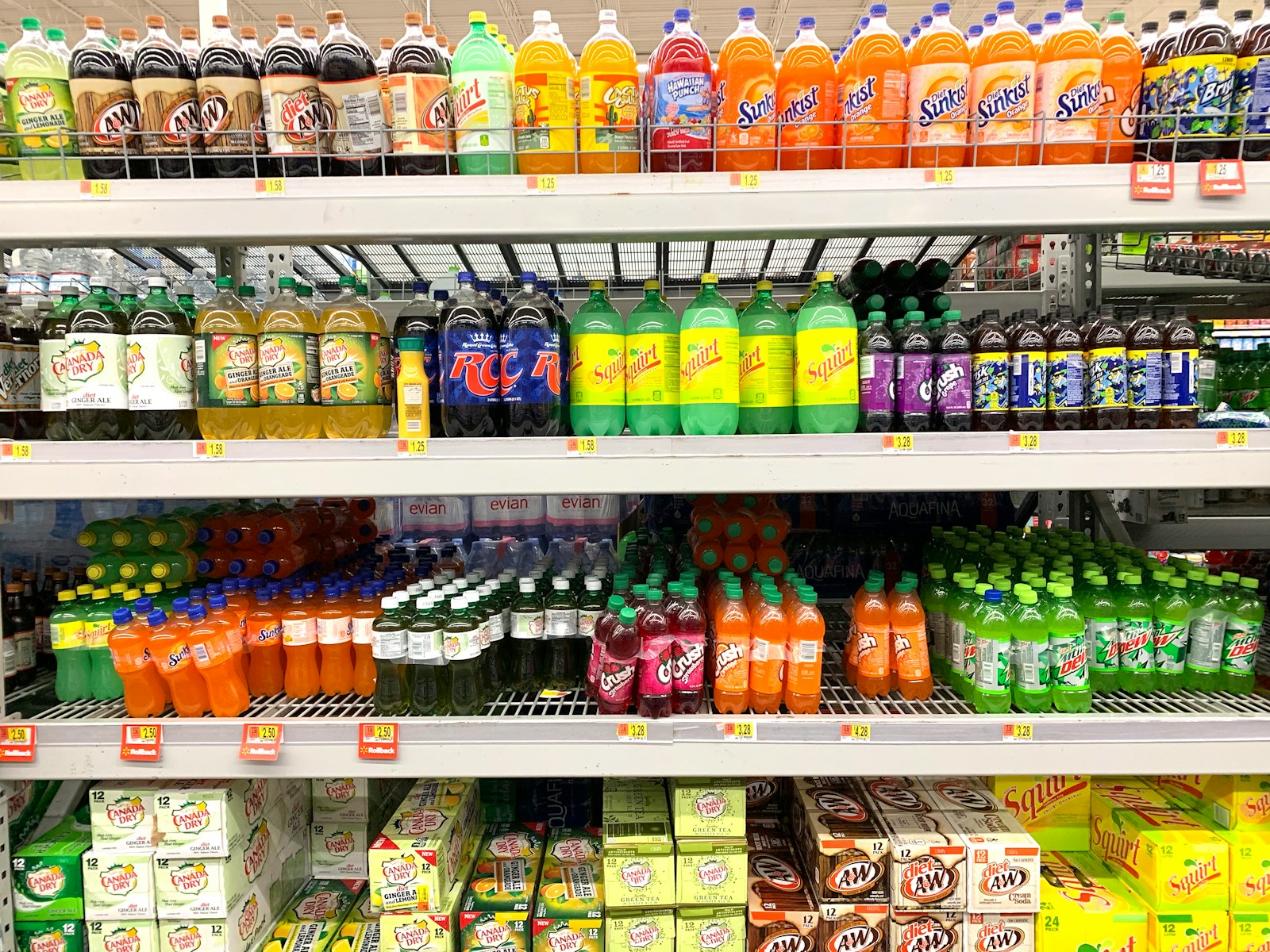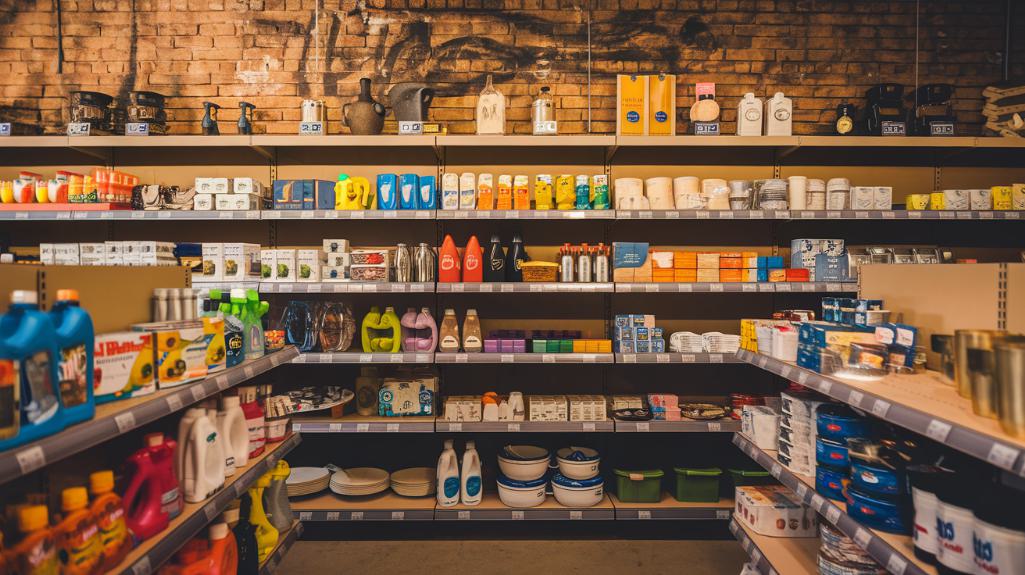AI-powered shelf monitoring systems combine computer vision and predictive analytics to revolutionize retail operations. These solutions reduce stockouts by up to 50% through real-time inventory tracking and automated reordering processes. Smart surveillance capabilities detect theft patterns while optimizing product placement based on customer behavior. Implementation of these systems yields 10-15% sales increases and 30% improvement in on-shelf availability. The integration of AI technology reveals multiple pathways to enhanced retail efficiency and loss prevention.
Key Takeaways
- Computer vision technology monitors shelves in real-time, detecting low stock levels and automatically triggering restocking alerts to prevent stockouts.
- AI surveillance systems analyze shopping patterns and customer behavior to identify potential theft risks and reduce inventory shrinkage.
- Predictive analytics combine historical sales data with external factors to forecast demand and automate reordering processes.
- AI-powered shelf monitoring reduces stockouts by up to 50% while improving on-shelf availability by 30%.
- Facial recognition and continuous movement monitoring enhance store security by detecting suspicious behavior and preventing theft attempts.
The Evolution of Retail Shelf Management Through AI
While traditional retail shelf management relied heavily on manual processes and human observation, the integration of artificial intelligence has revolutionized how retailers monitor and maintain their inventory.
AI solutions now provide real-time visibility into stock levels through advanced computer vision technology, enabling automated restocking alerts and reducing stockouts by up to 50%.
This transformation in retail operations has shifted the focus from manual inventory checks to data-driven demand forecasting and automated shelf management.
Companies implementing AI-powered systems benefit from enhanced operational efficiency, improved product placement, and reduced labor costs. Additionally, AI-powered analytics track consumer behavior, allowing retailers to optimize their inventory based on real-time shopper interactions.
The technology analyzes stock trends continuously, enabling retailers to maintain ideal inventory levels while redirecting staff toward customer satisfaction initiatives.
This systematic approach to inventory management represents a significant evolution in how modern retailers address stockout challenges and improve overall store performance.
Real-Time Computer Vision for Stock Level Detection
Real-time computer vision stands at the forefront of modern shelf monitoring solutions, leveraging advanced image recognition algorithms to detect and analyze stock levels with unprecedented accuracy.
Through continuous shelf monitoring, AI-powered systems process vast datasets of product images, enabling instant alerts when inventory reaches critical thresholds.
This sophisticated approach to stock level detection delivers significant operational benefits, with retailers experiencing up to 30% improvement in on-shelf availability.
The technology’s ability to provide automated, real-time insights streamlines inventory management processes while reducing manual errors.
Computer vision systems optimize product placement by analyzing customer behavior patterns, ensuring strategic shelf positioning.
This integration of AI and visual monitoring technology not only helps reduce stockouts but also enhances the overall customer experience by maintaining consistent product availability throughout the retail environment. Furthermore, AI-powered solutions like ShelfWatch prevent theft and enhance shelf-level security, providing an additional layer of protection for retailers.
Smart Loss Prevention With Ai-Powered Surveillance
Modern retailers deploy AI-powered surveillance systems to revolutionize loss prevention strategies through advanced behavioral analytics and pattern recognition. These intelligent systems analyze shopping patterns in real-time, identifying potential theft risks and suspicious activities before losses occur.
The integration of facial recognition technology with behavioral analytics enables thorough store security measures that effectively combat organized retail crime.
AI-powered surveillance platforms continuously monitor customer movements, detecting anomalies that may indicate theft attempts while maintaining a non-intrusive shopping environment. This sophisticated approach to loss prevention has demonstrated significant reductions in inventory shrinkage across retail operations. Additionally, the implementation of AI solutions for retail can further enhance the effectiveness of these surveillance systems in minimizing losses and improving overall operational efficiency.
Optimizing Inventory Flow With Predictive Analytics
Beyond securing assets through surveillance, retailers are revolutionizing their inventory management through AI-powered predictive analytics. By leveraging historical sales data and external factors like weather patterns and local events, retailers can forecast demand with unprecedented accuracy, reducing stockouts by up to 50%.
AI-powered tools automate reordering processes while enabling dynamic adjustments based on real-time data analysis. This systematic approach to enhancing inventory flow eliminates manual intervention and improves supply chain efficiency.
The integration of predictive analytics into inventory management systems has demonstrated significant improvements in operational effectiveness, with retailers reporting 10-15% increases in sales through better product availability. This data-driven methodology guarantees ideal stock levels while minimizing waste, transforming traditional inventory practices into responsive, automated systems that align precisely with consumer demand patterns.
Measuring ROI: The Business Impact of AI Shelf Monitoring
While retailers have long sought reliable methods to measure technology investments, AI-powered shelf monitoring systems now provide concrete metrics for evaluating return on investment.
Implementation data reveals substantial improvements across key performance indicators, with stockouts reduced by up to 50% and on-shelf availability enhanced by 30%.
The ROI manifests through multiple channels: reduced operational waste from efficient inventory management, decreased labor costs through automation of routine shelf checks, and improved customer satisfaction due to consistent product availability.
Additionally, retailers report significant reductions in losses from theft through advanced surveillance capabilities. The integration of real-time monitoring enhances security and helps identify potential issues before they escalate.
These measurable outcomes demonstrate how AI shelf monitoring directly impacts profitability by streamlining operations, minimizing shrinkage, and maintaining ideal stock levels, providing retailers with quantifiable evidence to justify their technological investment.
Frequently Asked Questions
How Can AI Optimize Inventory Management and Prevent Stockouts?
Real-time tracking and predictive analytics enable automated replenishment through demand forecasting, while stock optimization leverages sales trends, inventory visibility, supplier collaboration, customer insights, and waste reduction for efficient management.
How Is AI Transforming Inventory Management in Retail Operations?
Modern inventory management integrates data analytics, demand forecasting, and real-time tracking with automated reordering systems. Supply chain optimization leverages predictive modeling, visual recognition, and loss prevention to enhance operational efficiency.
How Does AI Affect the Retail Industry?
AI revolutionizes retail through integrated customer insights, sales forecasting, personalized marketing, supply chain optimization, dynamic pricing strategies, consumer behavior analysis, trend monitoring, fraud detection, store layout optimization, and demand planning.
How Has AI Affected Inventory Management?
AI inventory systems enhance operational efficiency through predictive analytics, automated replenishment, and demand forecasting. Data accuracy improves supply chain management, while trend identification and customer behavior analysis optimize stock levels.
Conclusion
AI-powered shelf monitoring systems represent a transformative solution for modern retail operations. Through integrated computer vision, predictive analytics, and real-time surveillance capabilities, these systems considerably reduce stockouts and shrinkage while optimizing inventory management. As retailers continue to adopt these technologies, the demonstrated ROI in reduced labor costs, improved stock availability, and prevented losses validates AI shelf monitoring as an essential tool for retail efficiency.



